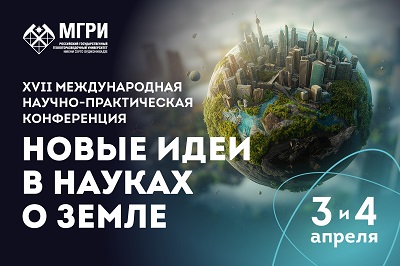Analysis of polarization of dipole modes in non-circular boreholes in anisotropic formation
https://doi.org/10.32454/0016-7762-2015-5-52-59
Abstract
About the Author
G. S. ShchelikRussian Federation
References
1. Alford R.M. Shear data in the presence of azimuthal anisotropy: Dilley Texas // SEGTechnical Program Expanded Abstracts. Society of Exploration Geophysicists, 1986. P. 476-479.
2. Bartoli I., Marzani A., L. di Scalea F., Viola E. Modeling wave propagation in dampedwaveguides of arbitrary cross-section // Journal of Sound and Vibration. 2006. V. 295, N. 3-5. P. 685-707.
3. Charara M., Vershinin A., Deger E. et al. 3D spectral element method simulation of soniclogging in anisotropic viscoelastic media // SEG Technical Program Expanded Abstracts. 2011. P. 432-437.
4. Dellinger J., Etgen J., Nolte B. Symmetric alford diagonalization // SEG Technical Program Expanded Abstracts. 1998. P. 1673-1676.
5. Dellinger J., Nolte B., Etgen J.T. Alford rotation, ray theory, and crossed-dipole geometry // Geophysics. 2001. V. 66, N. 2. P. 637-647.
6. Ekstrom M.P. Dispersion estimation from borehole acoustic arrays using a modified matrixpencil algorithm // Proceedings of ASILOMAR-29. 1995. P. 449-453.
7. Komatitsch D., Tromp J. Introduction to the spectral element method for three dimensional seismic wave propagation // Geophysical Journal International. 1999. V. 139, N. 3. P. 806-822.
8. Nolte B., Cheng A.C.H. Estimation Of Nonorthogonal Shear Wave Polarizations AndShear Wave Velocities From Four-Component Dipole Logs // Technical report, Massachusetts Institute of Technology. Earth Resources Laboratory. 1996. 20 p.
9. Patterson D., Tang X.M. Shear wave anisotropy measurement using cross-dipole acousticlogging: An overview // Petrophysics. 2001. V. 42, N. 2. P. 107-117.
10. Randall C.J. Modes of noncircular fluid-filled boreholes in elastic formations // The Journal of the Acoustical Society of America. 1991. V. 89, N. 3. P. 1002-1016.
11. To say a C.A. Acoustical properties of clay-bearing rocks. // Ph.D. thesis. StanfordUniversity. 1982. 147 p.
12. Vernik L., Nur A. (1990). Ultrasonic velocity and anisotropy of petroleum source rocks: The bakken formation. // SEG Technical Program Expanded Abstracts. 1990. P. 845-848.
13. Zharnikov T.V., Syresin D.E. Repulsion of dispersion curves of quasidipole modes ofanisotropic waveguides studied by finite element method. // The Journal of the Acoustical Society of America. 2015. V. 137. N. 6. P. EL396-EL402.
Review
For citations:
Shchelik G.S. Analysis of polarization of dipole modes in non-circular boreholes in anisotropic formation. Proceedings of higher educational establishments. Geology and Exploration. 2015;(5):52-59. (In Russ.) https://doi.org/10.32454/0016-7762-2015-5-52-59








































